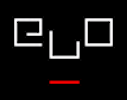Your cart is currently empty!
February 2012
-
CFP: Translating E-Literature (3/15, 6/12-14/12)
A number of ELO’s recent initiatives, including our participation in the CELL consortium, have focused on strengthening the network of artists and critics across national and linguistic boundaries. As translation… Read more.
·
